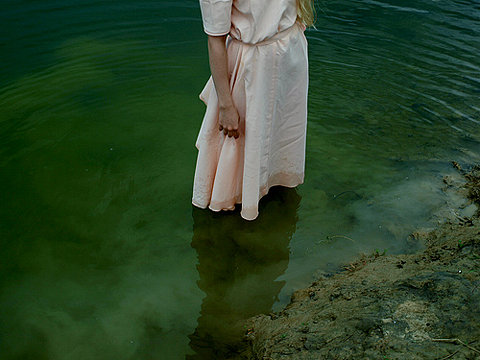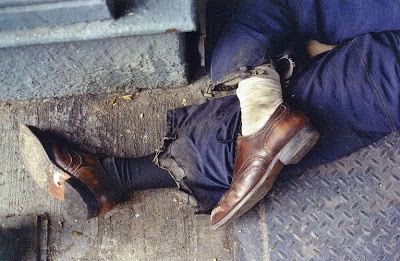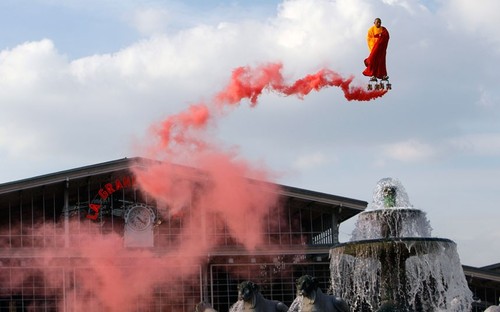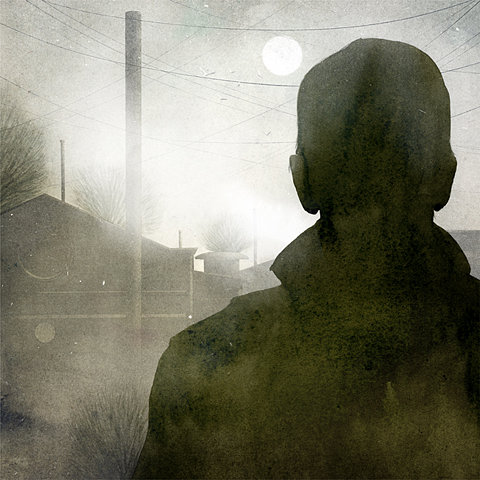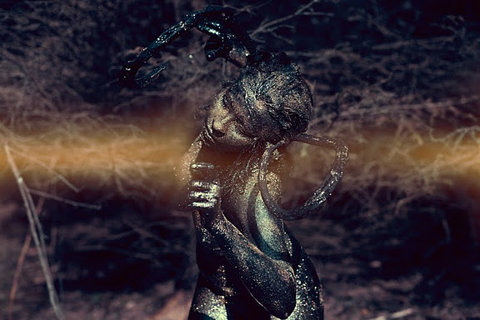Notes on a talk by Michael Stone at Centre of Gravity June 23, 2013
Present
In the Zen tradition there is a saying: “Reaching the mystery is nothing but breaking through and grabbing an ordinary person’s life.” The mystical experience turns out to be this present moment – the faith that we can see ourselves/others not dictated by fear and jealousy. What we touch in sitting practice is not an empty void but a sense of being vibrantly alive. How do we embody this aliveness without holding on too tight?
One of the characteristics the Buddha ascribes to someone who has authentically entered the path (a stream entrant) is that they are no longer dependent on the views of others. In other words, they can trust their experience. We talk a lot about being able to let go of fixed viewpoints, but sometimes we really need to trust our viewpoint. The Buddha urges us to go beyond belief and practice to reinforce autonomy, this becomes a new ground.
Bad Pork
When he is eighty the Buddha and two relatives travel north to the province of Mala. In Pava (one of the two main towns in Mala), Kunda, a blacksmith, offers him a meal of tender pork. He eats it and becomes very sick and dies. Amongst his last words to Ananda: “Ananda, it may be that you may think: ‘The Teacher’s instruction has ceased, now we have no teacher.’ It should not be seen like this, for what I have taught and explained to you as Dhamma and the rule will, at my passing, be your teacher.”
The Buddha suffered even when he was young from ulcers. In the end he died of pains related to digestion. He tells his cousin Ananda that the only solace he himself can find is in meditation. Therefore Ananda you should live with yourself as an island, with no other refuge. With teachings of reality (dharma) as refuge. How does a monk live like this? You experience the body as the body. You experience feelings as feelings, mental states as mental states. It is just patterns of sensation moving through the body. It feels so personal, but many of those sensations don’t belong to you, they don’t belong to any single person.
“Conditioned things break down” – everything breaks down. So take care of the path. The path is not separate from you. Please take care of your life because it’s so fragile. Have you ever seen an older person fall down? All your life you walk, run, jump, and then you fall down and every step is a warning sign. It. Could. Happen. Again.
Sit
It’s so easy to forget who you are completely. Sometimes sitting scares people. Being in a space where you can’t move and it hurts. The most important thing is to come back to yourself. What is it about sitting that is so valuable? We have so many inputs and so many people telling us what to do. During sitting practice you become your own teacher. You just let mind sit there. As you take the sitting position, you yourself become Buddha. What is Buddha? Buddha is: mind, this, now. And you act.
Really feeling that spot behind your navel when you breathe in and breathe out. For a while you’ll be monkey mind. You will have patterns of sensation materialize in all kinds of ways. But there you are seated in community so you might as well practice. The form allows a lot of freedom within specified patterns. It’s very powerful. You can experience this for yourself. How to use the energy of this room, this gathering, to take refuge in yourself, to practice hard and really go for it.
Blood Ceiling
When I was in Japan there was a temple north of Kyoto with a circular window, famous because many had enlightenment experiences there. When I was in Kyoto I was told: you should go to the meditation hall, and sit looking at the ceiling. So I sat looking at the ceiling. There were amazing patterns in the wood, but what was special about the ceiling is that it was built with planks from the emperor’s killing floor. If you look up you can see sides of faces, feet, arms. Workers took these bloodied boards and made a temple out of them. The place of horror turned into a place of peace. (It’s so hard to let go of what we hate, and watch that person turn into someone we love.) Similarly, there’s an artist in New York making Buddhas out of melted down ammunition.
Who are You?
Bodhidharma was the person who brought the dharma from India to China, he’s known as the founder of Zen. When he was in China he met Emperor Wu. The Emperor asked him: “What are the holy teachings?” And Bodhidharma answered him, “Unholy nothing.” The Emperor asked him, “Who are you?” Bodhidharma replied, “I don’t know.” Instead of conditioned arising and the four ennobling truths and the eightfold path the teaching is immediate and fresh. “Who are you?” (in this moment, this instant) “I don’t know.”
Then he went to Shaolin and sat facing the wall for nine years. There’s something about facing the wall, when it’s just you and the wall, the wall is like a mirror. It quickly unfocusses your eyes so you can watch your mind.
Teach Me
One day Ji Guang came and asked Bodhidharma to be his student. Please teach me. “Go away, I don’t want any students.” The next day he came back. “Please teach me.” “You’re just one of those people who want to get enlightened.” The next day he cut off his arm and said, “I really want to study with you.” Bodhidharma looked at the place where his arm used to be and asked him, “What do you want?” “My mind is so crazy, help me put it to rest.”
Robert Aitken had a student who really wanted to be a nun so she cut off her ring finger. Sixty years later in an interview she said, “I’m glad that’s all I had to give up in order to do what I really wanted.”
When Simone came to Gravity a couple of weeks ago she asked about our practice. How is your practice? Another way of saying this is: what have you given up?
Ji Guang said to Bodhidharma: “I’m suffering, I’m in great pain. Please put my mind to rest.” Bodhidharma replies: “OK, bring me your mind and I’ll put it to rest.” Ji Guang goes away (But for how long? They never say in these old stories. Is it a day, a month, a year?) When he returns he says, “Teacher I have searched everywhere but I cannot find my mind.” Bodhidharma replies, “There. I’ve put it to rest for you.”
There are so many ways to hear the dharma. Sometimes you get a cheerleading talk. Sometimes a beautiful sutra. Sometimes we study texts like this. But trusting your experience is the most important part of your practice.
Four
To sum up, there are some unique ideas the Buddha taught, that had never appeared before. 1. Conditioned arising: Buddha woke up to the fact that everything arises in conditions. Nothing is born alone. Conditions are not separate from you, you are those conditions. 2. Four ennobling truths. We need to embrace difficulty, let go of grasping, stop and experience the cessation of craving, and act. Because everything you do makes a difference. You can’t just observe life going by, you’ll turn to cardboard. 3. Mindfulness: You can know the body as a body, the more intimate you are with the breath the less personal it is. 4. The Buddha thought of himself as a doctor, not as a founder of religion. He always comes back to how we’re experiencing our lives. Buddha’s teaching starts with perception, how do you perceive your own nature, your own uniqueness, your light?
Buddha Death
In his last hours, Gotama Buddha has sharp pains through his abdomen and up through his neck. He’s in his early eighties. His companion Ananda puts water on his feet and holds his hand as the Buddha sweats and his abdomen cramps. Ananda goes back and forth to a nearby stream hauling small jugs of water to the bedside. Gotama knows this pain. He’s had ulcers his whole life. But this is worse.
Just a day earlier, when he knew he was falling ill, the Buddha asked Ananda to prepare a couch for him in a sala grove, between two trees with his head to the north. The Buddha is wearing fresh robes and his skin is tender. After lying motionless for hours, he asks Ananda for water, and needs help to raise it to his lips. Ananda’s tears fall in the dust, making patterns like stucco.
The evening air is warm and the Buddha slips in and out of consciousness as Ananda sprinkles water on the surface of his skin. The dark is thickening.
“Don’t cry,” Gotama Buddha whispers.
Ananda looks at the Buddha’s glossy eyes, flushed face and feverish skin. His hands are cold and clammy to Ananda’s touch.
“Ananda, now you have to live with yourself as an island. As a refuge, with nothing else as a refuge. You need to trust yourself.”
Ananda considers the Buddha’s words and puts the water jug down. He recalls the Buddha teaching that one should take refuge in the triple treasures: in the Buddha, in life, and in the community. But now the Buddha is saying something else entirely. “Take refuge in yourself, Ananda. And also in the dharma, the truth of reality. Make this truth your refuge and no other refuge.”
“How?” Ananda asks softly.
“Ananda, contemplate your body as a body. It’s just a body. Feel how your body is just a body. Right now Ananda. Only now. Feel how your body is only a body. Be earnestly clear, aware, mindful, and put aside all craving and fretting for the world. Do the same with feelings and thoughts. Feelings are just feelings Ananda. Thoughts are thoughts Ananda. They break down. They change. They are not so real Ananda. They are only feelings and thoughts. This is everything I’ve taught. Ananda, are you listening? This is everything I know. Everything you’re attached to is passing.” The Buddha stops speaking and closes his eyes. He shifts onto his right side and loosens his robe with his left hand.
“Ananda, conditioned things break down. Tread the path with care.”
Ananda feels a calm he hasn’t felt in forty years, though he doesn’t yet understand exactly what Gotama means. How to be an island to himself, seemingly distinct yet at the mercy of water? Swallowed tears catch inside of his throat, he coughs, and the Buddha’s eyes close.
The pause after the Buddha’s exhale had been lengthening with each breath, and now expands to fill the entire grove. Shadows curl around the low bed and the candle goes out. The surrounding hills are silent, and the silence drowns out all sounds. An island, like a body, is just a conditioned and fleeting thing. “How can I take refuge in that?” Ananda reaches for the Buddha’s hand. The Buddha never spoke carelessly. “To take refuge in myself is to take refuge in everything. To trust myself is trust in everything.”
Ananda pictures the deaf student who came to visit the Buddha last month, and the old woman who lost her sons. He remembers thinking that they needed to take care of themselves, to trust themselves, and how the Buddha gave them confidence in their own ability to see, to feel, to inhabit their lives. Even in pain.
Over the next days there will be a trickle of visitors to this grove where the Buddha died. Ananda will realize the Buddha’s words: Everything breaks down. Tread the path with care. There are no certainties. THIS is a refuge. Ananda studies his hands. This is what he taught me. This is what he gave me. He is gone.
